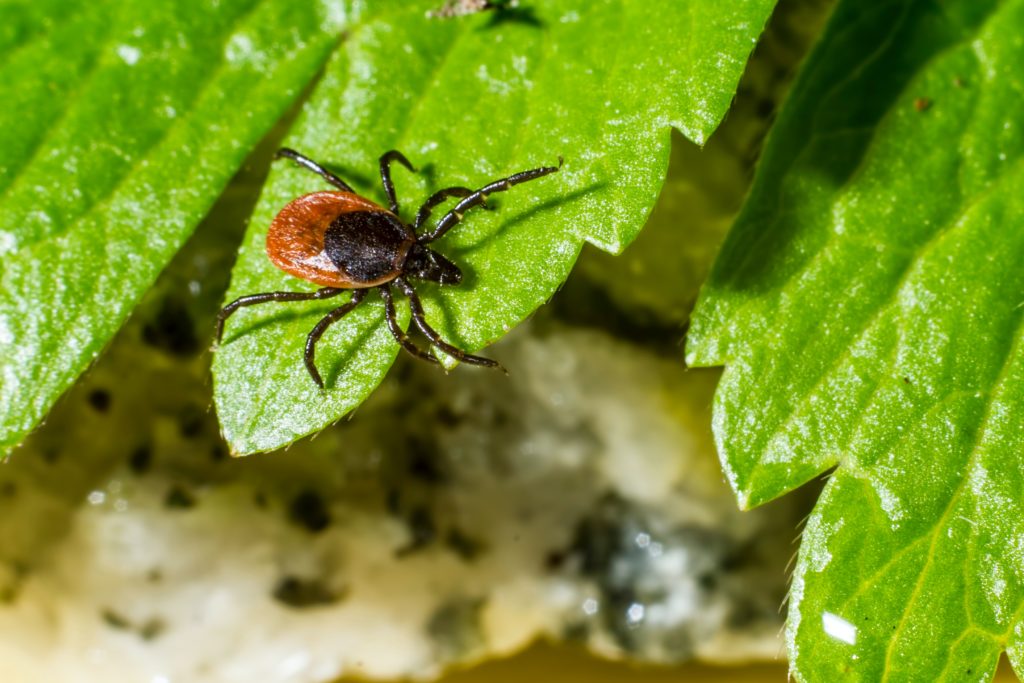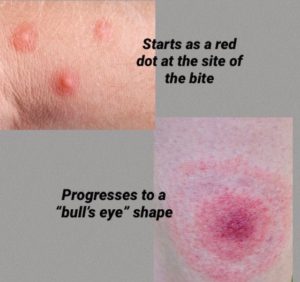Lyme disease was discovered in 1975 when a group of children in Old Lyme, Connecticut contracted mysterious symptoms that were very similar to arthritis. It is caused by B. burgdorferi, a bacteria carried by deer ticks and transmitted via the skin through a tick bite. Lime disease is the most common tick-borne illness in the US.
Not every bite from a deer tick will result in Lyme disease. However, the risk increases the longer the tick stays attached to the skin, generally 36 hours or more. Cases have been reported in most states, and are increasing in areas of Asia and Europe.
Lyme thrives in patients who have a weakened immune system, do not exercise, have a poor metabolism, have hypo-thyroidism, or have poor circulation. It is very important to get early treatment for Lyme disease, so patients should seek testing immediately. Even if you don’t experience symptoms for a time, the bacteria could still be present in the body. Twenty percent of people who are bitten by a tick never get a rash. It is best to tell your doctor that you have been bitten by a tick within three days so that you can be tested and treated before serious symptoms occur. People who get early treatment usually recover without any complications. If it is not treated early, Lyme disease can spread to the joints, heart, muscles, and nervous system over time and cause serious complications.
What are the signs?
Lime disease presents in three stages:
Stage One is localized and much easier to treat. Generally. a red rash will appear on the localized area. It starts as a small red spot at the site of the bite. The spot gets bigger over time, forming a circle or oval shape resembling a bull’s eye. The rash can vary in size and other rashes can appear as the infection spreads. In addition to rashes, the patient can also experience flu-like symptoms.
Stage two can present symptoms of swelling in the joints, heart problems, palpitations, feeling lightheaded, fainting, chest pain, and shortness of breath. Neurological complications can begin to occur such as a stiffness in the neck, headache, numbness, pain or weakness in the arms and legs, and poor motor control.
Sixty percent of patients who remain untreated and move into stage three can develop recurring attacks of arthritis, predominately in the knees. Ten to twenty percent of those untreated patients develop chronic arthritis. Another five percent can develop long lasting neurological problems, such as numbness of the limbs, shooting pain, short-term memory loss, and hearing loss.
Treatment Options
How can one take holistic measures to recover from Lyme disease and improve immunity and wellness? Lyme disease can cause physical and mental difficulties and pharmaceutical drugs can also take a toll on the body. Holistic treatments may enhance any medical treatment, help your body fight off a current illness, and strengthen the immune system to help fight off future exposure to other illnesses. On the mental side, living with physical limitations, fatigue from treatment, and chronic pain can cause chronic fatigue and depression. The goal for a holistic approach is to allow the body to heal naturally, mentally and physically.
The first step is to strengthen the immune system. Some doctors may choose to start a course of antibiotics to kill the bacteria. Unfortunately, this also kills off the good bacteria in the gut and weakens the immune system. The body is designed to fight off illness on its own, but there are ways that you can support and strengthen your immune response to help you recover quickly.
Integrative treatments may include:
- Essential oils
- Herbal protocols
- Supplements
- Infrared Sauna Therapy
- Exercise: releases endorphins, relieves depression, and increases circulation to give the immune system a boost.
- Anti-Inflammatory Diet: Diet changes should be discussed with your holistic doctor and developed to your specific needs. A nutritious and anti-inflammatory diet can heal the gut and decrease inflammation. One example is the Paleo Diet.
- Stress-Relief: Many health problems stem from stress. It is important to get enough sleep and find activities such as yoga, meditation, therapy, or a hobby that can help reduce stress.
- Clay & Epsom Salt Baths
- IV Therapy
- Ozone Therapy
- Ultraviolet Blood Irradiation (UBI)
**Check out this video on Dr. Axe’s experience with UBI.
Recovery
Most people who develop Lime disease can fully recover with the proper treatment. Call the office today and make an appointment to discuss your treatment plan.


